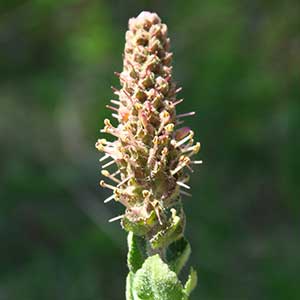Synthyris rubra
(synonym of Besseya rubra)
Synthyris laciniata
red besseya
cut-leaf kittentail, western kittentails
strictly annual, disintegrating in 1st year;
blade oblong-ovate to ovate, 25+ mm wide, leathery, base cuneate, truncate, or rounded to lobate, sometimes cordate, margins crenate, teeth apices acute to rounded, surfaces sparsely hairy;
basal veins extending into distal 1/2 of blade, lateral veins 3–6 on each side of midvein.
persistent, some withering in 2d year as new leaves expand;
blade ± orbiculate, reniform, or cordate, 25+ mm wide, not leathery, base cordate or lobate, margins ± laciniate, sometimes palmately lobed or incised-crenate, teeth apices obtuse to rounded, surfaces glabrous or sparsely hairy;
basal veins usually extending into distal 1/2 of blade, lateral veins 2–4 on each side of midvein.
erect, to 45 cm in fruit;
sterile bracts 10–30, ovate-spatulate, largest 1+ cm;
flowers 100+, densely aggregated (separating in fruit).
erect, to 20 cm (usually less than 25 cm in fruit);
sterile bracts 3+, ovate-spatulate, largest 1+ cm;
flowers 15–40, loosely aggregated.
inserted on receptacle.
epipetalous.
ovules 17–40.
ovules 10–16.
densely hairy.
glabrous.
4, basal connation between abaxial and adaxial lobes on each side of flower.
4.
1–4, apex entire or erose;
corolla reddish, bluish purple, green, or white, bilabiate or unilabiate, rudimentary, much shorter than calyx, glabrous, lateral and abaxial petals of abaxial lip connate 1/2+ their lengths, abaxial and adaxial petal lips basally adnate to stamens, tube absent.
(3 or)4(or 5), apex entire or erose;
corolla blue, ± regular, campanulate, much longer than calyx, glabrous, tube conspicuous.
Synthyris rubra
Synthyris laciniata
Natural hybrids of Synthyris missurica and S. rubra occur near Kamiah, Idaho (A. R. Kruckeberg and F. L. Hedglin 1963).
(Discussion copyrighted by Flora of North America; reprinted with permission.)
Synthyris laciniata is found only in high mountain areas of central to west-central and southern Utah. Flowering in S. laciniata begins at the margins of melting snow banks.
(Discussion copyrighted by Flora of North America; reprinted with permission.)


